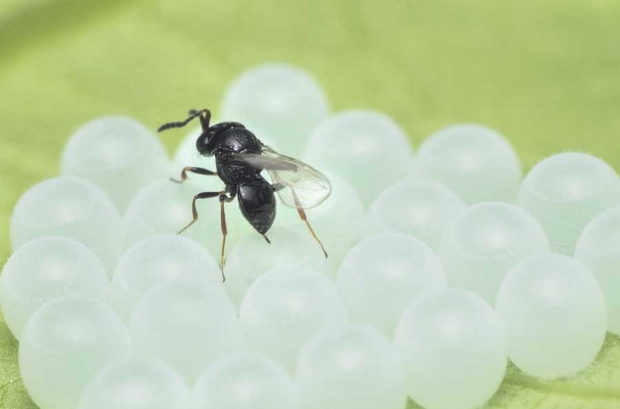You know about butterflies, about bees, beetles, and ladybugs, all of our favorite garden critters – but do you know about the parasitic wasp? Alias: The Parasitoid. Not quite a parasite and not quite a predator, they are the zombie-creating hymenopterans that make your garden their home and hunting ground. Unlike a true parasite, the parasitoid will eventually kill its host, but unlike a true predator, there is a gap between parasitism and host death. The Parasitoid is truly one of a kind, but with thousands of species in over 40 families, there are many of that kind. They prey by laying their eggs in or on the bodies and eggs of other arthropods, growing, aging, and getting stronger as their unknowing host provides their executioner food and shelter until the parasitoid is ready to attack.

As menacing as their way of life may seem, parasitic wasps are actually one of the most effective biological pest control agents available to home gardeners, and can be an excellent indicator of habitat health for ecologists. As biocontrol agents, parasitoids can effectively manage a very wide variety of pests from aphids and sawflies to weevils and mites, along with many more. They occur naturally if their hosts/prey and habitable conditions are present and it costs little to nothing to maintain their populations. If pest outbreaks are not completely out of control and the site is habitable, parasitoids can safely, easily, cost-effectively, and naturally bring pest populations below economic injury thresholds. Know any pesticides that check all those boxes? In terms of habitat health, parasitoids can drive biodiversity and positively influence ecosystem functions. As such, their diversity and abundance can act as an indicator for the overall health and functionality of an ecosystem – such as your home garden.
Is it starting to seem like parasitic wasps could be an area of research for say. . .a garden

ecology lab? Certainly seems like that to me. That’s why this upcoming year I will be taking on an undergraduate research project to assess the parasitoid populations present in the Portland home gardens Gail and I have collected bees from for the last 3 years. Thanks to our sampling methods, we already have lots of parasitoid data to perform this analysis with, so there won’t be any more soapy bowls in your gardens this summer. This is the first of hopefully many blog posts that will accompany this research, so stay tuned as the year progresses to learn more about your new flying friends!
Further Reading and References:
https://www.cell.com/trends/ecology-evolution/comments/S0169-5347(06)00152-2
http://publications.gc.ca/collections/collection_2015/aac-aafc/A59-23-2015-eng.pdf
http://ipm.ucanr.edu/PMG/PESTNOTES/pn74140.html
Video showing some parasitoid activity:
